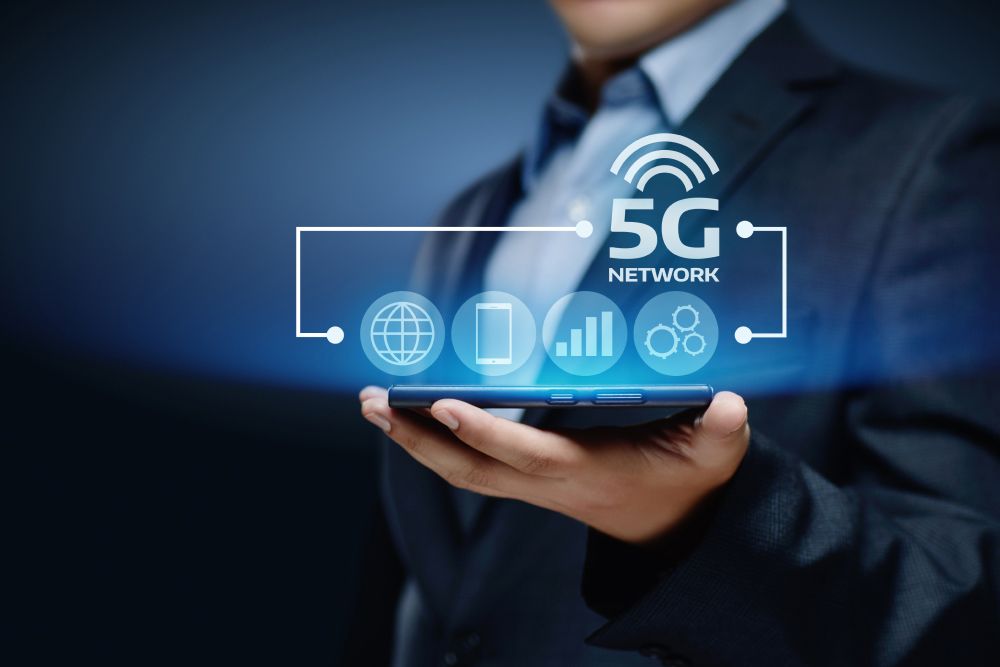The fifth generation of wireless cellular technology, better known as 5G, is known for its fast data speed, quicker uploads and downloads, reliable connection, and lower latency to mobile networks. This tech was designed to connect devices and people across long distances, and it is a comprehensive upgrade over its predecessor, 4G, in terms of data availability and resilience in various conditions. One will find applications of this technology in self-driving cars, high-speed gaming, and live streaming, among many other areas.
5G vs. 4G
The key differences between the two technologies can be explained through certain parameters.
Latency
This refers to the measure of responsiveness and efficiency of a given mobile network. The higher the latency of a given network, the slower it is. With 4G, latency ranges from 60 to 98 milliseconds. In a 5G network, the latency is less than 2 milliseconds.
Download speeds
This determines how quickly or slowly the network allows users to download large documents, apps, and media files from the internet onto their mobile devices. The potential download speed of 4G networks is around 1 GBPS; for 5G networks, this number goes up to around 20 GBPS.
Base stations
A key difference between 4G and 5G networks is the base station, i.e., the place from where internet signals are transmitted to mobile devices within range. Like its predecessors, 4G transmits signals from conventional cell towers. However, 5G uses small-cell technology to emit signals. Here, 5G internet providers create a high-speed network through small cells about the size of pizza boxes in multiple strategic locations. This allows 5G to project more powerful signals, offering lower latency and greater internet potency. For its lower-frequency spectrums, 5G continues to use cell towers.
Cell density
In the context of mobile internet networks, cell density refers to the number of cell towers or small cell units (base stations) deployed within a given area. The small-cell technology powering 5G enables internet providers to increase cell density and network capacity. So, 5G does what its predecessors tried to do—it increases cell density to support more users and connected devices. This also increases connectivity and mobile device frequency.
In terms of numbers, the goal for cell density is around 200 to 400 users per cell in 4G, whereas the goal for cell density is around 100 times greater in 5G networks.
Impact of 5G on businesses
Lower latency in supply chains
Smooth communication between different stakeholders in a supply chain is key to reducing latency between fulfilling orders. This is where 5G helps businesses, speeding up communication over long distances due to its innovative small-cell working mechanism. This means that communication time is saved at every phase of the logistics cycle—raw material procurement, demand forecasting, order processing, inventory management, warehousing, pick up and packing, transportation, order delivery, and after-sales customer service. This benefit of 5G networks even applies to industries such as agriculture, manufacturing, and retail.
Optimization of IoT networks
An IoT network connects multiple smart devices to create an intuitive, data-driven, and largely automated digital ecosystem in homes, offices, factories, cities, and even larger zones. IoT requires high-speed, latency-free network connectivity to work seamlessly. With 5G, connected IoT smart devices can sense, respond, and transfer data as quickly as possible. Additionally, the future of 5G and its economic impact is closely connected to the growth of IoT, which will ultimately benefit many industries.
Impact of 5G on consumers
Improved gaming experience
Modern games tend to be graphics-heavy and dependent on internet connectivity. The high data speed and low latency of 5G networks make such games slick and highly responsive to play. Additionally, 5G has also improved virtual reality (VR) experiences by allowing VR devices to connect seamlessly and provide immersive experiences to gamers. This is how 5G is gradually transforming industries like healthcare and gaming.
Better streaming quality
With 5G networks, one can stream movies, music, and TV series in the highest video resolution/audio quality possible without interruptions. With its small-cell working mechanism, 5G reduces the lag one would generally experience when relying on weaker internet connections.
Some other benefits of 5G technology for consumers in their everyday lives include getting optimal user experience when working with data-heavy applications and access to broadband-like mobile internet connectivity.
The possible impact of 5G on smart cities
A smart city is an urban zone that leverages advanced technology and data collection to improve residents’ quality of life, promote sustainability, and optimize urban operations—traffic management, law enforcement, and ticketing for large events. The city does that through a digitally connected infrastructure of devices and systems, which can get a boost with 5G network connectivity.
Smarter traffic management
Using high-speed 5G networks, smart cities get to dramatically reduce congestion and road safety. They can achieve these goals by improving the communication between smart vehicles, intelligent street lights, and traffic management authorities in real time. Here, 5G networks speed up access to real-time data from traffic cameras, sensors, and GPS data from vehicles. As there would be low communication latency here, thanks to 5G, smart cities can access benefits like optimal traffic flow, adjustment of traffic signals dynamically, and provision of real-time navigation updates to drivers.
Better public safety and services
Reliable, high-speed communication is vital for improving public safety and the speed of emergency services in smart cities. This is another aspect that 5G networks can assist with by enabling real-time video streaming from surveillance cameras or drones to emergency control rooms. This helps first responders get accurate and timely updates regarding the locations they need to reach. Also, 5G networks help support advanced alert systems that immediately disseminate critical information to authorities.
